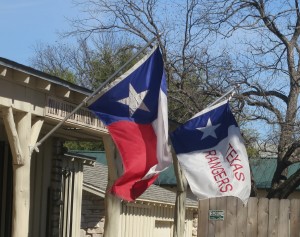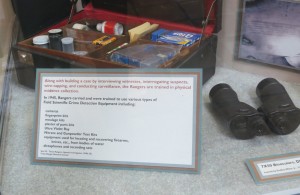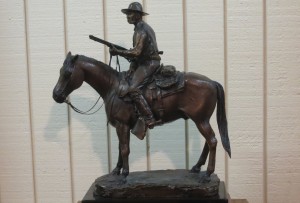KN, p. 152 “Murder in the Cathedral”
I had an opportunity to travel to Montreal with Sheila recently and we stopped in at the Notre Dame Basilica. It’s a beautiful place, with amazing artwork, stained glass, and wood carvings throughout. And, it has lots of dark corners and shadowy spaces. And lots of places to hide a body if you had murderous thoughts on your mind.
Shocked at my bringing that up? You shouldn’t be…not if you read mysteries, follow British TV crime shows, and/or saw the play, “Becket” on Broadway.
The real-life murder of Thomas Becket, the Archbishop of Canterbury, during a service in Canterbury Cathedral back in 1170, may have been the basis for all the church related fictional depictions of murder that followed through the centuries. Becket and King Henry II had been in a power struggle for many years, until Henry felt the only way to stop Becket’s staunch refusal to follow orders was to get rid of him. While that heinous crime was committed at an altar and not in a shadowy part of the church, there were plenty of less public spots the deed could have been carried out. However, the soldiers were under the command of the king and therefore thought they were above the law, no matter who saw them do the deed. And there were witnesses.
Let’s take a look at the less public spots in any large church that has areas along the side for worship or for the display of religious artifacts.
 The lighting in the photo has not been adjusted. It was so dark in that section that Sheila and I could not see who/what was in the alcove/hallway to the left of this side altar.
The lighting in the photo has not been adjusted. It was so dark in that section that Sheila and I could not see who/what was in the alcove/hallway to the left of this side altar.
In most churches lucky enough to have large organs, the choir/organ loft is rarely used by anyone except the organist. The choir rehearses elsewhere and only sits there during services. Access to the loft is usually isolated and there are several spots in the lofts themselves where the light barely reaches.
One of my favorite books in Margaret Truman’s series set in Washington, D.C., “Murder in the National Cathedral,” tells of a priest murdered in a chapel, unseen by anyone.
How is that possible in a place that has wide-open, public spaces, even if dark or shadowy? Wouldn’t the murder itself be heard? Truthfully, there just isn’t much of a staff hanging around in the sanctuary or side chapels except on service days. Any sound not amplified by a microphone is absorbed by wall hangings or carried away because of incredible acoustical design. The head and assistant priests, the music director, the church secretaries, the sexton, are all doing their jobs during the day – elsewhere. At the end of the workday, they all go home like the rest of us. It’s only cathedrals and basilicas that have crowds walking through them all day long every day. And even then, with all the nooks and crannies, all the isolated hallways, all the out-of-the-way chapels and alcoves, the likelihood of a bad guy getting away is only limited by locked doors.
Most churches can become deliciously wicked places that handily serve as backdrops for murder – oh, not your place of worship, of course. 😉 And, most assuredly, not the Basilica. I merely used the photos I took as a way of pointing out the fictional possibilities.
If for some reason, you’ve never read the Cadfael novels, watched “Father Brown,” or read the DaVinci Code books, you should. Murder within the walls of a religious institution? Murder solved by a seminary-educated man, who has been steeped in the rules and moral codes of God, and is likely to be more forgiving than any law enforcement officer might be? The story ideas practically fill the pews.
Consider the concepts of these books/shows:
“Brother Cadfael” – A Benedictine monk from the 12th century, serves as medical examiner, detective, and doctor for the Abbot and puts his knowledge of herbs and science to use when solving crimes. Set in west England and based on mysteries written by Edith Pargeter (aka Ellis Peters), it is widely felt to be historically accurate.
“DaVinci Code” – The wildly successful book by Dan Brown (and subsequent movie) is a murder mystery involving a religious conspiracy that reaches back to the time of Christ. In real-life it was extremely controversial among the religious community. 80 million copies of the book were sold in 2009.
“Father Brown” – A Roman Catholic priest solves crimes in his parish in the Cotswolds. Most often, the murders are committed in the town, but there have been leaps from the church’s roof and deaths in the local Seminary. Set in the post WW2 1950s of England, the TV series is based on G.K. Chesterson’s short stories.
Have you ever visited a spooky church? Met a crime-solving priest? Let us know in the comments.
*Photos taken by Patti Phillips
KN, p. 152 “Murder in the Cathedral” Read More »









